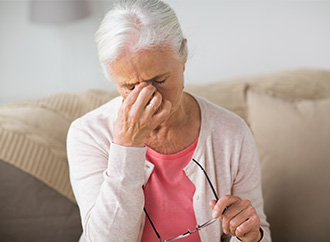
Low Vision Rehabilitation
What is Low Vision Rehabilitation?
If the visual functions obtained do not meet the person’s goals in life, despite the necessary surgical and medical treatment, the person is considered to have low vision. Low vision rehabilitation aims to increase the quality of life of the person by using the necessary devices and methods. It is planned individually for each person.
What causes low vision?
It can be caused by any eye disease and/or systemic disease that negatively affects visual functions (especially visual acuity and visual field).
Symptoms of low vision
- Not being able to see close up, not being able to read a book despite normal reading glasses
- Not being able to see far clearly
- Not being able to see the blackboard for students, not being able to read a book
- In infants and young children, eye tremors, squint, not being able to make eye contact
- Decreased vision in the dark
- Sensitivity to light
- Color vision impairment
How is low vision rehabilitation treatment applied?
It is planned individually according to the underlying disease and the degree of deterioration of visual functions. Optical or digital low vision aid devices (such as telescopic glasses, microscopic glasses, telemicroscopes) and/or methods such as microperimetry are used.
Prepared by the Dünyagöz Hospital Editorial Board.
*The content of this page is for informational purposes only. See your doctor for diagnosis and treatment.
Last Update Date: 30.07.2022






